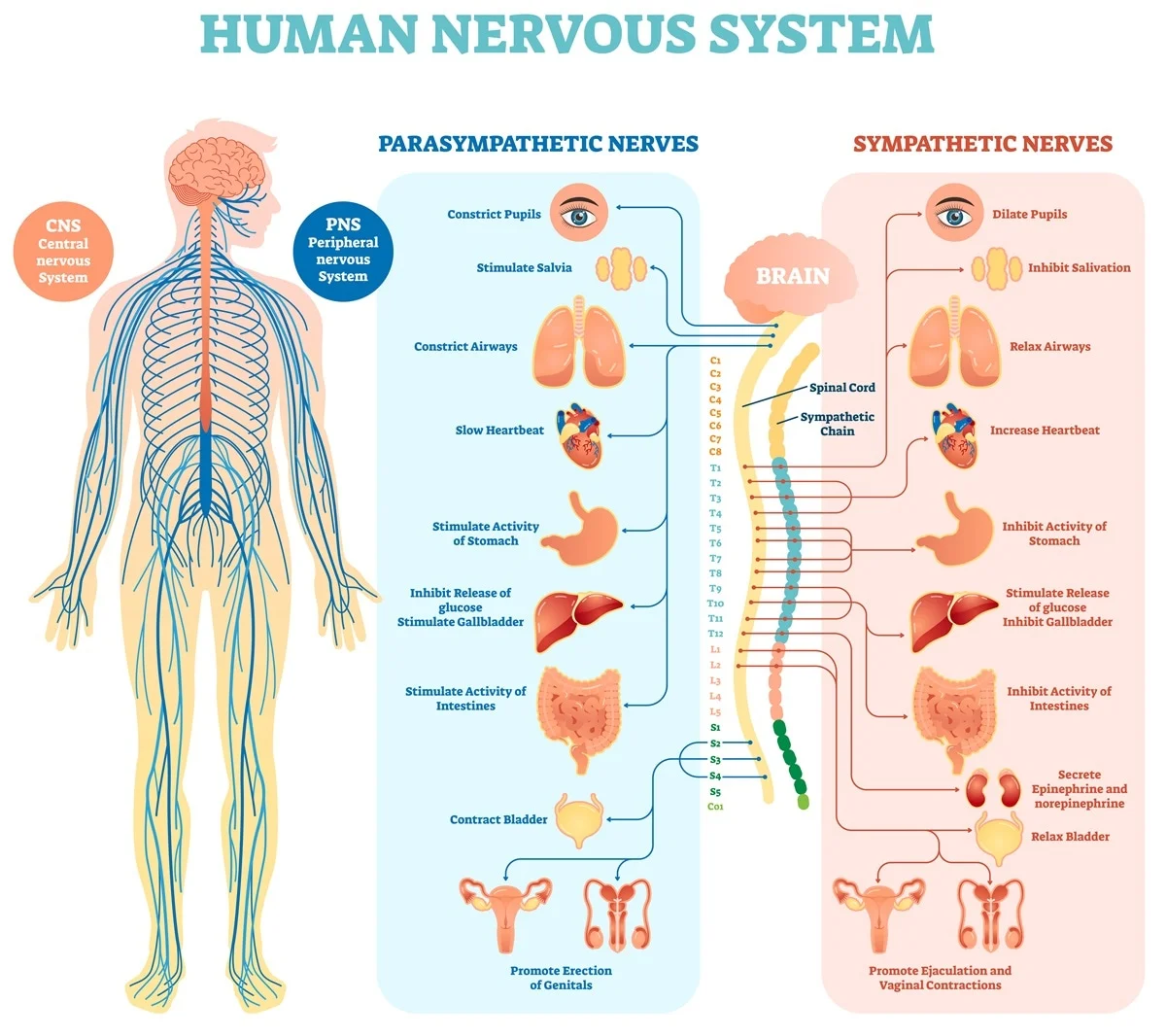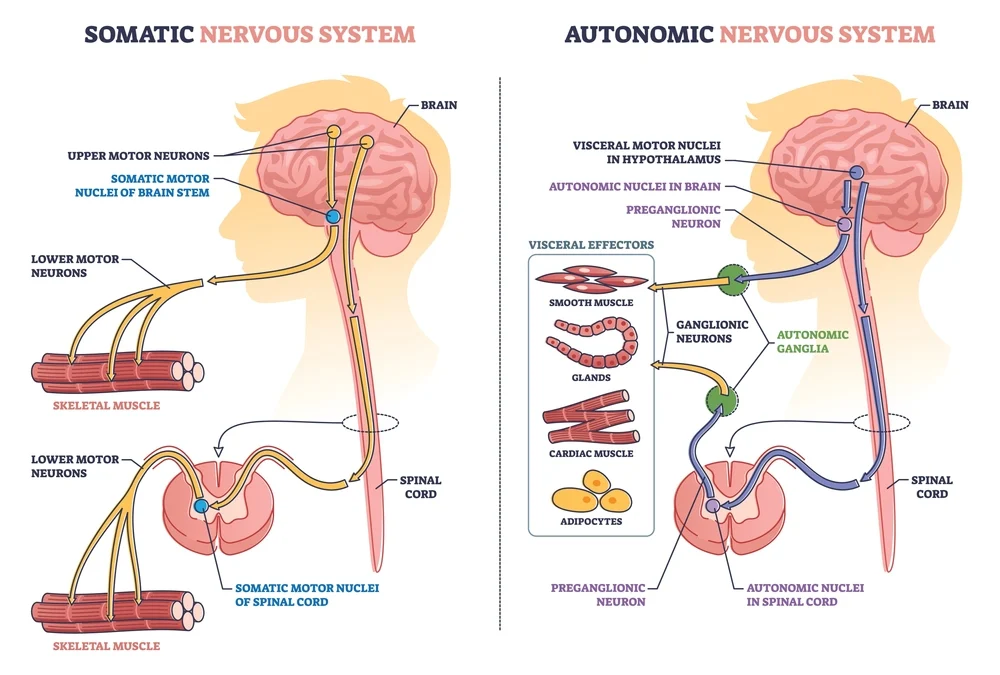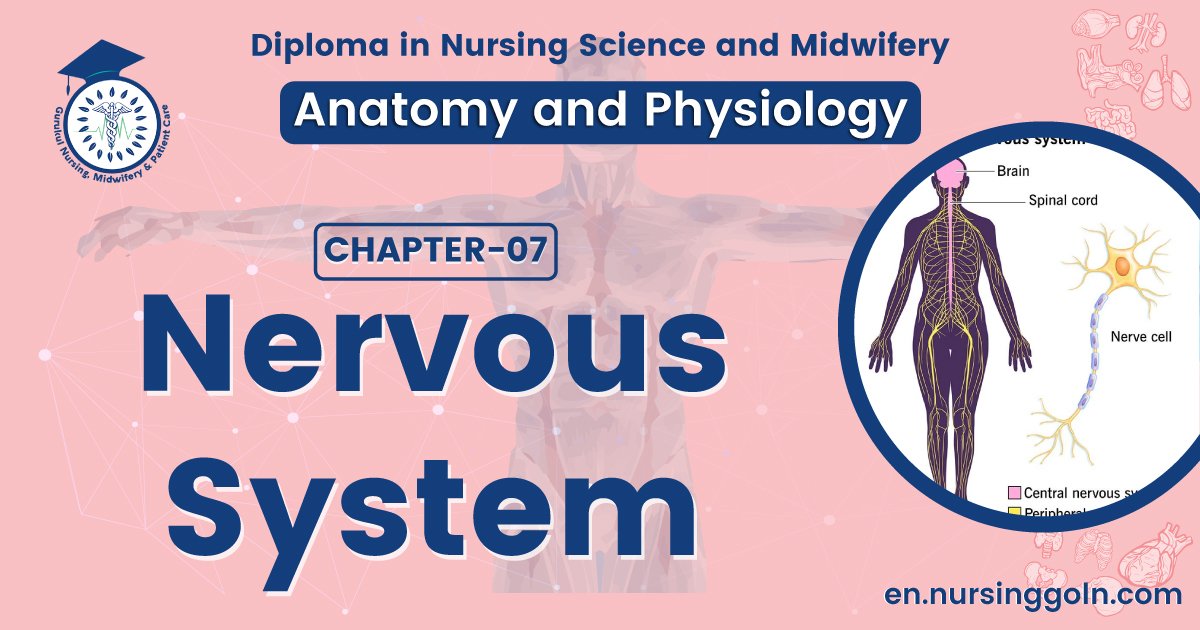Nervous system-The course is designed for the basic understanding of anatomical structures and physiological functions of human body, musculoskeletal system, digestive system, respiratory system; cardiovascular system; urinary system, endocrine system, reproductive system, nervous system, hematologic system, sensory organs, integumentary system, and immune system.The aim of the course is to acquire knowledge and skills regarding anatomy and physiology.

Nervous system
The nervous system is an intricate, highly organized network of billions of neurons and even more neuroglia. The structures that make up the nervous system include the brain, cranial nerves and their branches, the spinal cord, spinal nerves and their branches, ganglia, enteric plexuses, and sensory receptors.
The nervous tissue forming the nervous system is composed of:
- Neurons, the functional cells and
- Neuroglia, the supportive cells
Definition:-
The nervous system is the system of extremely delicate nerve cells elaborately interlaced with each other which regulate and coordinates body activities and bring about responses by which the body adjusts to the changes of environment either external or internal.
Classification of nervous system
A. Central Nervous system (CNS)
a. Brain
- The brain stem
- Diencephalon
- Cerebrum
- Cerebellum
b. Spinal cord
B. Peripheral Nervous system (PNS)
a. Somatic
- Spinal nerves 31 pairs
- Cranial nerves 12 pairs
b. Autonomic
- Sympathetic
- Para-sympathetic
Somatic and autonomic nervous system
The nervous-system carries out a complex array of tasks, such as sensing various smells, producing speech, and remembering past events, in addition, it provides signals that control body movements, and regulates the operation of internal organs These diverse activities can be grouped into three basic functions: sensory, integrative, and motor
1. Sensory function
Sensory receptors detect internal stimuli, such as an increase in blood acidity, and external stimuli, such as a raindrop landing on your arm. This sensory information is then carried into the brain and spinal cord through cranial and spinal nerves.
2. Integrative function.
The nervous-system integrates (processes) sensory information by analyzing and storingsome of it and by making decisions for appropriate responses. An important integrative function is perception, the conscious awareness of sensory stimuli. Perceptionoccurs in the brain.
3.Motor function.
Once sensory information is integrated, the nervous-system may elicit an appropriate motor response by activating effectors (muscles and glands)through cranial and spinal nerves Stimulation of the effectors causes muscles to contract and glands to secrete.
(Ref-J. TORTORA, The essentials of anatomy and physiology. 8h edition, P-486.487)

Difference between the somatic nervous system and autonomic nervous system

There is one primary difference between the somatic nervous-system and autonomic nervous- system. The somatic nervous-system includes all the functions of the body that are done voluntarily, like moving a leg or finger. The autonomic nervous-system includes all the functions of the body that are done involuntarily, like breathing or Heart beat.
- The somaticnervous-system (SoNS) is the part of the peripheral nervous-system associated with the voluntary control of body movements through the skeletal muscles and mediation of involuntary reflex arcs.
- The autonomic nervous-system (ANS) is the part of the peripheral nervous-system that controls visceral functions which occur below the level of consciousness.
The ANS can be subdivided into:
- The parasympathetic nervous-system (PSNS) and
- The sympathetic nervous-system (SNS)
Read more:
